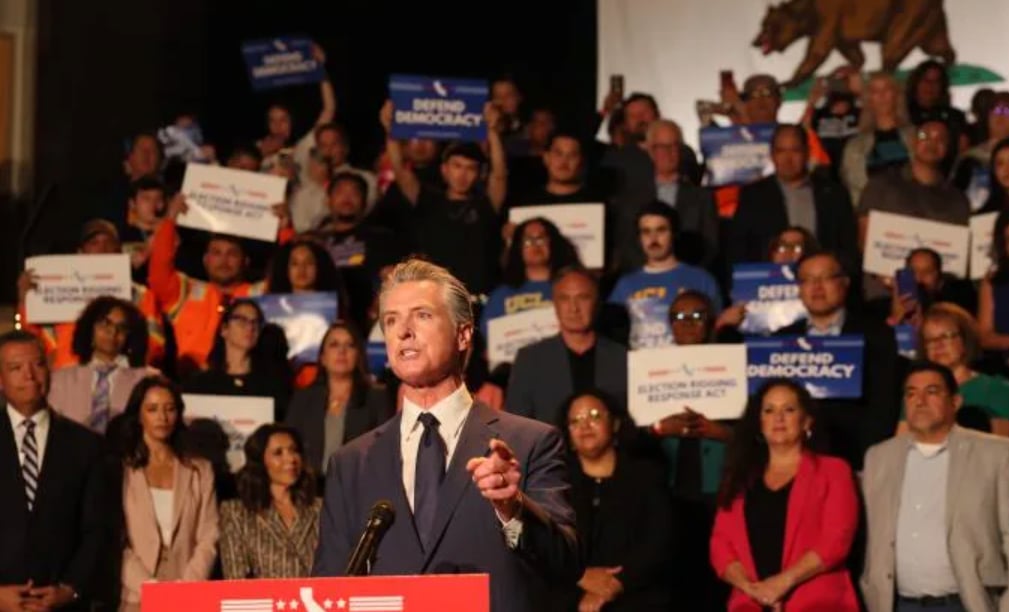Democrats’ “Trump Lite” Strategy: A Bold Move to Save Democracy or a Risky Gamble?
8/22/20254 min read


Democrats’ “Trump Lite” Strategy: A Bold Move to Save Democracy or a Risky Gamble?
Introduction: A New Playbook for Democrats
In a political landscape dominated by polarization, Democrats are trying a surprising new tactic to counter former President Donald Trump’s influence: adopting a “Trump lite” approach. Spearheaded by California Governor Gavin Newsom and backed by former President Barack Obama, this strategy involves mimicking some of Trump’s bold political maneuvers—specifically, redrawing congressional maps to secure Democratic seats in the House of Representatives. But is this a clever counteroffensive to protect democracy, or a dangerous flirtation with the same tactics Democrats have long criticized? Let’s dive into the details of this provocative plan and what it means for the future of U.S. politics.
The Context: Trump’s Redistricting Power Grab
The “Trump lite” strategy emerged as a response to Republican efforts, particularly in Texas, to redraw congressional maps in a mid-cycle redistricting push. According to reports, Trump urged Texas legislators to gerrymander maps to gain up to five Republican House seats for the 2026 midterms. This move, seen as an attempt to solidify GOP control and protect Trump’s agenda, raised alarms among Democrats. In response, Newsom proposed a California referendum to redraw the state’s congressional maps, potentially netting Democrats five seats to offset Republican gains elsewhere. This plan, dubbed the Election Rigging Response Act, aims to “fight fire with fire,” as New York Governor Kathy Hochul put it.
Why “Trump Lite”?
The term “Trump lite” refers to Democrats adopting aggressive, confrontational tactics reminiscent of Trump’s playbook, but with a twist: they claim it’s a temporary measure to safeguard democracy. Newsom has been vocal about Trump’s disregard for electoral norms, stating, “He doesn’t believe in the rules.” To counter this, California’s plan would bypass its independent Citizens Redistricting Commission—a hallmark of the state’s democratic process—for a one-time partisan map redraw. This move has sparked debate, with critics like Republican Representative Kevin Kiley calling it “an attack on democracy.”
Former President Obama’s endorsement adds weight to the strategy, though he’s expressed unease about gerrymandering. At a National Democratic Redistricting Committee fundraiser, Obama admitted wrestling with the idea of abandoning fair redistricting principles but sees it as a necessary evil to counter Trump’s actions. This shift reflects a broader sentiment among Democrats: traditional strategies haven’t worked against Trump’s unorthodox approach, so it’s time to get tough.
The Risks of Playing Dirty
While the plan aims to level the playing field, it’s not without risks. First, California voters may reject the referendum, as early polls show skepticism about altering the state’s redistricting process. The Citizens Redistricting Commission is a cherished institution, and convincing voters to support a partisan map redraw could backfire. Second, Democrats risk alienating their base, which has long championed fair elections and criticized Republican gerrymandering in states like Illinois and Maryland. As Democratic strategist Katie Merrill noted, this could be seen as “hypocritical” and undermine the party’s moral high ground.
Moreover, the strategy could escalate a redistricting war nationwide. States like New York, Ohio, and Florida are already considering similar moves, potentially turning congressional map-drawing into a free-for-all. This tit-for-tat approach might deepen voter cynicism at a time when both parties are grappling with low approval ratings, exacerbated by economic concerns like high grocery prices and housing costs.
Newsom’s Political Ambitions
The “Trump lite” plan also positions Newsom as a national Democratic leader, potentially setting the stage for a 2028 presidential run. By framing the referendum as a direct stand against Trump, Newsom is tapping into the Democratic base’s demand for a fighter. His social media posts, like one taunting Trump’s “DESPERATION” over mail-in voting, mimic Trump’s bombastic style while rallying supporters. If the plan succeeds and Democrats flip the House in 2026, Newsom could claim significant credit, boosting his profile. However, failure could tarnish his reputation and fuel accusations of opportunism.
A Broader Democratic Dilemma
This strategy highlights a deeper question for Democrats: how far should they go to combat Trump’s influence? Veteran strategist James Carville has proposed even more radical ideas, like adding Puerto Rico and Washington, D.C., as states and expanding the Supreme Court to 13 justices. These proposals, while bold, face significant hurdles and could further polarize the electorate. Meanwhile, grassroots activists argue for mass mobilization, urging Democrats to inspire voters rather than mimic Trump’s tactics. As Slovenian activist Nika Kovac noted, successful movements against authoritarianism often rely on public action, not just elite strategies.
What’s at Stake?
The “Trump lite” approach underscores the high stakes of the 2026 midterms. Democrats argue that Trump’s actions—such as Project 2025’s plans to replace civil servants with loyalists or deploy the military domestically—threaten democratic norms. By adopting aggressive tactics, they hope to regain control of Congress and check Trump’s power. Yet, this risks normalizing the very practices they’ve condemned, potentially eroding trust in democratic institutions further.
Conclusion: A Tightrope Walk for Democracy
The Democrats’ “Trump lite” strategy is a high-stakes gamble that could either bolster their chances in 2026 or backfire spectacularly. By adopting Trump’s tactics, they aim to protect democracy but risk alienating voters and escalating partisan warfare. As the nation grapples with economic challenges and political division, the success of this plan will depend on whether Democrats can convince voters that the ends justify the means. For now, Newsom’s campaign is a bold experiment in a polarized era, and its outcome could shape the future of American politics.
Thought-Provoking Questions for Readers:
Do you think adopting “Trump lite” tactics is a justified response to Republican gerrymandering, or does it undermine Democratic principles?
Can Democrats balance fighting fire with fire while maintaining voter trust in their commitment to fair elections?
How should Democrats address economic concerns like inflation and housing to regain voter support alongside their democracy-focused strategy?
hello@boncopia.com
+13286036419
© 2025. All rights reserved.